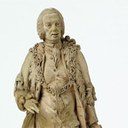0087 Model Making and Anti-Competitive Practices in the Late Eighteenth-Century London Sculpture Trade
Identifiers (Article)
Identifiers (Files)
Abstract
This article concerns the generation of anti-competitive practices, and the associated discontents, that rose to the fore in the London sculpture trade in the late eighteenth century (1770-1799). It charts the business strategies and technical procedures of the most economically successful practitioners, whose workshops had some of the characteristics of manufactories, and whose critics accused them of conducting a "monopoly" trade. Small-scale practitioners lost out in the competition for great public contracts on account of their design processes and their inability to represent any manifestation of "establishment". A combination of three factors increased the gap between a handful of powerful "manufacturers" and the rest of the trade: the foundation of the Royal Academy, shifts in the ways designs were evaluated, and a growing number of very lucrative contracts for public sculpture. I conclude that such were the discontents within the London trade that by the 1790s, there was a marked tendency for practitioners who were not manufacturers to be attracted to democratic political movements, to the Wilkite call for liberty and the rise of civic radicalism in the merchant population of London.
Statistics


License

This work is licensed under a Creative Commons Attribution-NonCommercial-NoDerivatives 4.0 International License.



